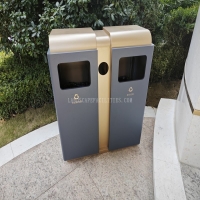Welcome to the website for landscape facilities products and knowledge.
How does the table’s surface resist fading or discoloration over time with sun exposure?
Modern outdoor and indoor tables exposed to sunlight incorporate several advanced technologies to resist fading and discoloration. The primary defense mechanism involves UV-resistant materials and protective coatings that act as barriers against the sun's harmful ultraviolet rays. Many premium tables feature specially formulated paints and stains containing UV inhibitors that prevent color molecules from breaking down. Additionally, manufacturers often use powder-coated finishes that create a durable, non-porous surface that reflects rather than absorbs sunlight. The table's core material also plays a crucial role - materials like high-density polyethylene (HDPE), aluminum with ceramic-infused coatings, and tropical hardwoods naturally withstand sun exposure better than conventional materials. Some manufacturers incorporate advanced technology where photostabilizers are embedded within the material matrix, providing ongoing protection even as the surface experiences wear. The manufacturing process itself contributes to fade resistance through techniques like through-color manufacturing where pigment runs throughout the material thickness rather than just surface-level application. Regular maintenance, including the application of UV-blocking sealants, can further enhance a table's resistance to solar radiation. The combination of material science, protective coatings, and proper care ensures that quality tables maintain their aesthetic appeal despite continuous sun exposure, with some premium models guaranteeing color retention for up to 10-15 years.
Related search:

Recommendation
Double-bucket garbage bin, outdoor, metal, multi-color, powder-coated, double-bucket trash can